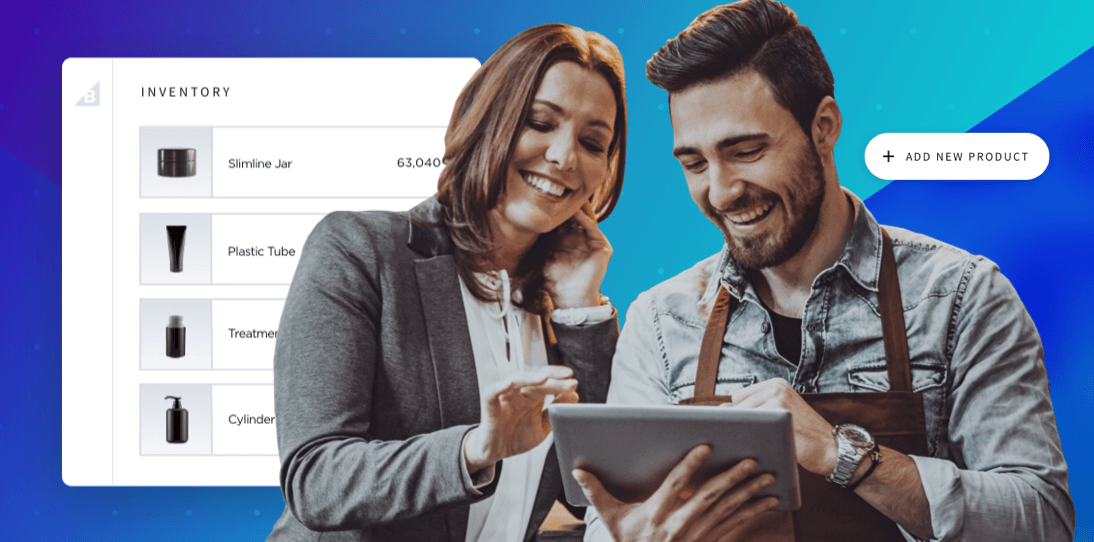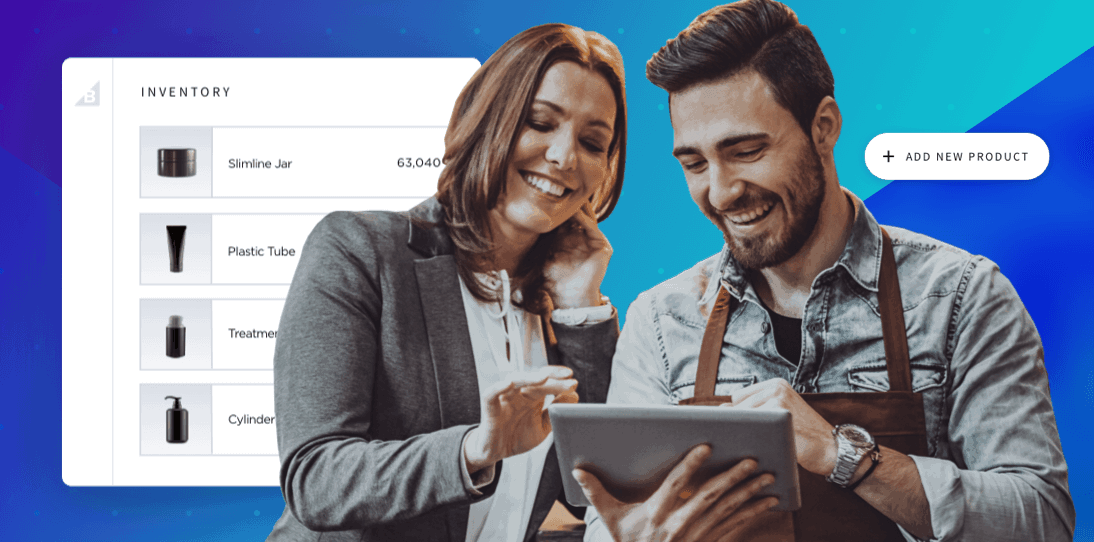- Enterprise
- Essentials
The Key Distinctions Between B2B and B2C Ecommerce Success

Ecommerce companies are constantly on the lookout for “best practices” to adopt to ensure their business runs smoothly and remains competitive. However, there’s no golden rule of thumb — especially when it comes to B2B (business-to-business) versus B2C (business-to-consumer) business models.
In fact, they are leagues apart.
B2B ecommerce companies sell goods and services to other businesses as part of a complex value chain. For example, a B2B business supplies tire casings to an automaker, which uses those casings to produce automobiles sold to a different end consumer.
On the other hand, B2C ecommerce stores sell directly to the end user. For example, people purchase groceries and personal gadgets at Walmart for their own personal use.
B2B transactions involve a much larger order value and protracted decision-making processes involving multiple stakeholders, while B2C transactions are smaller and more frequent.
The decision to purchase a carton of milk is far less convoluted than a business calculating how much raw material to purchase for the quarter based on complex production schedules and demand forecasting.
Key differences between B2B and B2C ecommerce
While both business models share a lot in common, the main differences are in the customer journey, marketing strategy, and the types of products offered.
Target audience.
Differences in target audience create distinctions in the marketing channels, product selection, and operations of B2B and B2C ecommerce businesses.
B2B
B2B customers are typically professionals, procurement managers, or decision-makers at other companies. These could be large corporations, small and medium-sized enterprises (SMEs), government agencies, or nonprofits. Successful B2B interactions rely on building trust, delivering consistent quality, and providing ongoing support.
B2C
B2C customers purchase items for themselves or others to fulfill their personal needs and desires. Intriguingly, a large proportion of B2C purchases are impulse buys — nonessential items that fulfill a want rather than a need — with the average person spending $314 per month. Consumers make purchase decisions based on factors such as price, convenience, and emotion.
Product complexity.
Complex, technical products such as software programs or high-end gadgets are more difficult to sell than items meant for everyday use, such as toothpaste or orange juice. However, complex products are more differentiated and bear a higher markup.
B2B
B2B products often carry detailed specifications. For example, a software program must meet the business’s unique needs, including factors like integration with existing systems and performance metrics.
Industrial goods and machinery require advanced technical knowledge to install, maintain, and operate. These products are typically part of a larger infrastructure (technological or physical) that requires careful planning and integration.
B2C
B2C products are more straightforward and are marketed to meet consumer preferences and lifestyle choices. Typically, these items are off-the-shelf — they don’t require customization, specialized knowledge, or technical expertise to use and operate.
Sales cycle.
The sales cycle is the process of converting a lead into a customer. Businesses require a deep understanding of how buyers make purchase decisions to execute this tactfully.
B2B
The sales process in B2B ecommerce is lengthy, involving numerous decision-makers. It may involve negotiation, product customization and ongoing support. The largest share of B2B sales (30%) take between 1-3 months to close, according to a survey by Databox.
The greater the order value, the more time it takes to close.
B2C
B2C purchase decisions are far more straightforward. Consumers make snap decisions based predominantly on price, convenience, and personal taste. The process is more direct, emphasizing instant gratification.
Market size.
Market size refers to the total number of potential buyers for a product. A larger market size presents greater opportunities for growth, but it requires careful segmentation.
B2B
B2B ecommerce businesses serve niche audiences within a range of industries. For example, manufacturing plants require specialized industrial machinery, while healthcare companies need medical equipment. B2B transactions often involve long-term contracts, recurring orders, and ongoing partnerships, all of which contribute to a stable and expansive market size.
B2C
B2C businesses target an unimaginably diverse consumer base spanning individual customers of all demographics. This broad reach contributes to a significant market size.
For context, global ecommerce retail sales revenue was projected to reach $6 trillion in 2023. Industries such as retail, fashion, electronics, and entertainment see the highest volume of individual purchases.
A New Approach for New Expectations
BigCommerce’s B2B ecommerce platform enables you with powerful features to readily meet — and exceed — your buyers’ expectations.
B2B SolutionsImportant similarities between B2B and B2C ecommerce
Despite massive distinctions in target audience, marketing strategy, and the sales cycle, B2B and B2C ecommerce businesses share many operational similarities.
Role of digital platforms.
Both types of businesses rely heavily on digital platforms to manage orders, maintain an online storefront, and build their digital presence. Here are the most commonly used platforms:
Ecommerce platforms: Low-code software designed to build, maintain, and update an ecommerce website. Features like product catalog management, secure payment gateways, shopping cart functionality, and inventory management power online transactions.
Order management systems: Software that handles order processing, inventory management, and fulfillment. This may also include tools for managing shipping and logistics.
Customer relationship management (CRM) systems: Platforms for storing and managing customer interactions and automating lead generation.
Digital marketing platforms: Email marketing automation, social media scheduling, SEO, and content marketing and other platforms for creating and managing marketing content.
Supplier relationship management (SRM) software: Centralizes all communications with suppliers, performance monitoring, and contract management.
Data security.
Businesses handle customer’s personal information including names, addresses, and payment details. Securing this data is paramount to prevent unauthorized access, data breaches, and identity theft.
Ecommerce businesses must offer secure payment gateways to safeguard payment data. Data encryption, firewalls and intrusion detection systems (IDS) protect data during transmission and storage.
Finally, access controls prevent unauthorized parties from accessing sensitive customer data.
Importance of the customer experience.
B2B and B2C businesses live and die on the customer experience. B2C customers desire a frictionless online shopping experience, liberal return policies and fair pricing. They are more likely to buy from brands to which they have an emotional connection.
On the other hand, B2B customers expect more, given the large order value, product complexity and associated contractual obligations. Transparent pricing, ongoing technical support, and trust are just a few factors B2B buyers use to evaluate those they do business with.
Future trends of B2B and B2C ecommerce
B2B and B2C ecommerce companies are embracing new technologies to better serve their customers and offer personalization at scale.
Omnichannel shopping.
In an omnichannel shopping experience, all channels are interconnected, allowing customers to start their shopping journey on one channel and seamlessly continue on another. For example, a shopper might browse products in a store and complete their purchase via a mobile app.
B2B
Omnichannel shopping simplifies B2B procurements by allowing buyers to research, compare, and purchase products across websites and mobile apps. B2B businesses can provide personalized product catalogs tailored to customer specifications, making it easier to reorder items or discover complementary goods.
Business buyers often prefer self-service options. Customer portals enable users to access order history and invoices and make changes independently. This also provides greater opportunities for personalized customer support.
B2C
Omnichannel shopping offers a seamless transition from in-store shopping to online browsing. This accommodates the trend of showrooming (browsing in-store and buying online) and webrooming (researching online and buying in-store).
For example, businesses can offer Buy Online, Pick Up in Store (BOPIS) options for enhanced convenience and reduced shipping costs. By gathering behavioral data from various channels, B2C businesses can offer more personalized recommendations to enhance the shopping experience.
Sustainability.
B2B and B2C customers are increasingly discerning of businesses that reduce their environmental impact and steer clear of wasteful practices or fossil fuel usage.
B2B
Responsible sourcing, ethical labor practices, and use of renewable energies help minimize environmental impact and are increasingly becoming a unique selling point.
For example, a produce supplier might source goods exclusively from local farmers to limit their carbon footprint and uplift the local economy, which attracts similarly-minded buyers.
B2C
B2C ecommerce businesses must consider the environmental impact of their products throughout their lifecycle, from sourcing and manufacturing to packaging and disposal.
Energy-efficient production, recyclable or reusable materials, and minimal packaging are key considerations for environmentally conscious buyers.
For example, Amazon is investing in last-mile delivery efficiency to minimize emissions and reduce congestion. This includes using electric vehicles, data-driven route optimization, and encouraging local pickup options.
Artificial Intelligence (AI).
B2B
B2B companies leverage AI-powered tools to provide a more personalized customer experience with custom quote generation, personalized product catalogs and more.
Here are some examples:
Predictive analytics: AI-powered analytics can provide accurate demand forecasts to optimize inventory management, reduce costs, and prevent lost sales.
Supplier relationship management: AI can analyze supplier performance data to help make businesses make informed decisions about supplier partnerships, negotiations, and contract renewals.
Sales and marketing automation: Automated lead generation, lead scoring, and personalized marketing campaigns helps B2B businesses identify potential customers and offer personalization at scale.
Enhanced customer support: AI-driven chatbots and virtual assistants can handle routine customer inquiries and support requests, freeing up human reps to focus on complex troubleshooting.
B2C
B2C companies use AI to enhance convenience and personalization.
Here are some examples:
Product recommendations - AI algorithms analyze consumers’ purchase and browsing habits to deliver tailored product recommendations. For example, when the Moore Brothers Wine Company integrated their POS system to link their physical store inventory with their wine catalog, they merged their customer data onto one platform to enhance personalization.
Chatbots: AI-powered chatbots can provide instant customer support, guide users through the shopping process and answer inquiries 24/7.
Dynamic pricing: Some businesses set prices based on real-time market demand, competitor prices, and customer behavior to maximize revenue.
Virtual try-on: Augmented reality technologies allow customers to virtually “try on” items like clothing, accessories, and even furniture, which increases purchase confidence.
Subscription models.
Subscription models provide businesses with recurring revenue and greater opportunities for personalization.
Subscription packages tend to fall into three categories:
Refills of essential items:The value proposition here is that B2C customers don’t need to worry about running out of everyday items like coffee or toothpaste, while B2B customers receive a steady supply of raw materials.
Curated items: A tastemaker selects items, such as clothing or wine, for the subscriber based on their stated preferences.
Access to exclusive content: Customers pay a fee for continued access to content and/or events or specialized software.
B2B
B2B subscriptions often include value-added services such as training, support, updates, and maintenance. This enhances the customer experience and strengthens the perceived value of the subscription.
For example, Videopro sells professional AV equipment while also providing AV integration services.
B2C
Some B2C subscription services introduce an element of surprise by offering curated or mystery products in each delivery, adding excitement and anticipation to the experience. Customers can also gain access to exclusive content, services or events, fostering a sense of community.
Data privacy and security.
Cyberattacks can be devastating for a business, exposing sensitive customer data or barring access to the ecommerce website, resulting in lost sales and reputational damage.
In a survey by Riskified, 82% of retailers said they have seen increased incidences of online fraud since the pandemic began.
B2B
B2B businesses handle data related to their suppliers, wholesalers and other stakeholders. Some of this data is shared across the value chain, leading to more potential vulnerabilities.
B2B transactions often involve sensitive and confidential information, such as contracts, pricing negotiations, and proprietary business strategies. Encryption, authentication, and data-sharing protocols are critical to preventing data breaches.
B2C
B2C businesses are subject to consumer data privacy regulations such as GDPR and CCPA, depending on their customer base.
B2C ecommerce websites handle a large volume of transactions. Implementing secure payment gateways and following Payment Card Industry Data Security Standard (PCI DSS) guidelines protects customers’ financial data.
Other safeguards include:
User account protection: Multi-factor authentication prevents unauthorized access to customer accounts.
Third-party integrations: Ensuring integrations adhere to strict security standards prevents vulnerabilities.
Customer communication: Handle customer communication with care, especially when it involves personal information.
The final word
B2B and B2C ecommerce businesses use vastly different approaches given the distinct markets they serve. While B2B businesses focus on serving niche markets and building long-term relationships, B2C companies cater to a wider demographic, with a focus on anticipating and meeting changing consumer tastes.
That said, providing a great customer experience, building a digital presence, and using emerging technologies to discover new efficiencies are universally shared values that lead to long-term growth and profitability.
FAQs about B2B vs. B2C ecommerce
What role does customer service play in B2B and B2C ecommerce?
B2B and B2C customers expect expedient, personalized service. That said, customer service plays a slightly different role in each business model.
In B2B transactions, customer service is considered part of the core product. Ongoing support and technical troubleshooting from a dedicated account executive or customer success manager ensures B2B buyers achieve their business goals while using the product.
On the other hand, customer service in B2C transactions is predicated on issue resolution during or after the buying process. Customers should be able to contact support with questions about returns, order status, and other problems they may encounter.
How do customer retention strategies differ for B2B and B2C ecommerce?
Due to the large average order value and high acquisition costs, customer retention is of supreme importance for B2B businesses. Retention strategies hinge on providing personalized, human support to add value beyond the core product. This includes custom quote generation, product customization, and bonus services such as training and regular software updates.
On the other hand, B2C transactions tend to be one-and-done as B2C shoppers switch brands easily. B2C businesses try to retain customers by offering loyalty programs, exclusive discounts and other perks. Subscription models are another key strategy for increasing customer lifetime value.
Can a business be successful in both B2B and B2C ecommerce at the same time?
Navigating two distinct markets simultaneously is tricky, but it absolutely can be done. One example is Ship It Appliances: the family-owned business sells industrial-grade kitchen appliances to B2B buyers while also retailing home appliances to individual consumers.
Here are some strategies to achieve success in both B2B and B2C ecommerce:
Segmentation: Clearly define your B2B and B2C customer segments and tailor your products, services, and marketing efforts to address specific customer needs and preferences.
Operational infrastructure: Ensure your ecommerce platform can handle the complexities of both B2B and B2C transactions. Consider implementing separate portals or user interfaces for each segment if necessary.
Marketing strategies: Develop different marketing strategies for B2B and B2C audiences. B2B marketing focuses on industry expertise, problem-solving, and efficiency, while B2C marketing emphasizes emotional connection, lifestyle, and convenience.
Product offerings: B2B offerings may include bulk pricing, customization options, and value-added services, while B2C offerings might focus on personalization, variety, and convenience.



